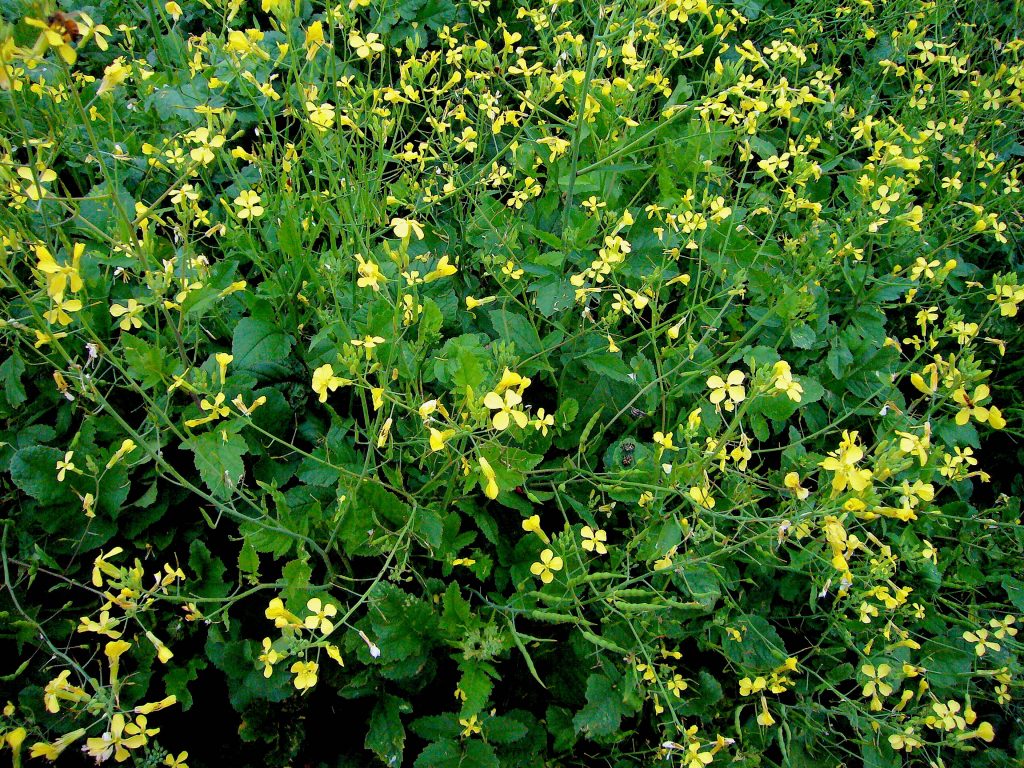
Wild Mustard and Radish are in blossom now. Photo by Green Deane

Peel the roots of their tough outer jacket then cook or eat raw. Photo by Green Deane
Two seasonal edibles are growing profusely now: Wild Mustards and Ringless Honey Mushroom. The latter usually favor early November every year, traffic on our mushroom facebook pages verify their flush. Also up this time of year and easy to spot is wild mustard and it’s equally edible relative, wild radish. They are common road side species, liking well- drained soil including roadside banks.(This is the same location to find Horsemint.) While used the same way they usually don’t grow together, you usually find a patch of one or the other.
The mustards and radishes offer many things to eat. The blossom can be added to various dishes raw of cooked, the seeds can be used as a spice or to make mustard. Tender leaves can be eaten raw, older leaves cooked are a pot herb. The tough roots are also edible. Take off the outer jacket, dice and cook or eat raw the inside. They have a radish to turnip flavor.
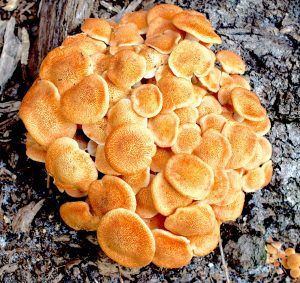
Ringless Honey Mushroom, Armillaria tabescens, recently renamed Desarmillaria caespitosa. Photo by Green Deane
Besides a new scientific name, increasingly the internet is calling Ringless Honey Mushroom “poisonous.” That is internet ignorance. It is like calling peanuts toxic. It is true that some people can’t eat the species causing digestive upset. but most people can. I eat about 80 dry pounds of them annually. Sometimes cooking them twice solves the digestive issue for some. I also don’t eat the stem. I dry and powder them for flavoring. The former name meant tobacco-colored bracelet. The new name means bracelet growing like a bouquet. Growing in a bunch is one of their most distinctive characteristics.
Foraging Classes: Hurricanes and other strong weather disrupt classes this time of year, The latest threat, Raphael, is expected to avoid Florida this week, so I have scheduled two classes.
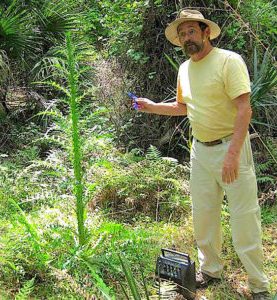
Foraging classes are held rain or shine, heat or cold. Photo by Nermina Krenata
Nov 9th Eagle Park Lake, 1800 Keene Road, Largo, FL 33771. Meet at the pavilion near the dog park. 9 a.m. to noon.
Nov 10th Mead Garden: 1500 S. Denning Dr., Winter Park, FL 32789. Meet at the bathrooms. 9 a.m. to noon.
For more information on these classes, to prepay or sign up go here. The cost is $30 per adult (the class is usually three hours long and examines five-dozen or so species.) If cost is a hardship email me at: GreenDeane@gmail.com.
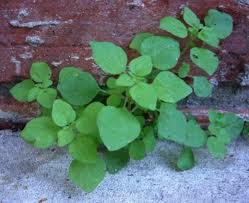
Pellitory a very mild green some people have an allergy to. Photo by Green Deane.
This is also about the time to be on the look out for Pellitory, a winter visitor that many folk view as a nuisance. This shade-loving perennial shows up when fall weather starts and stays around until at least mid-spring. Some years in very shady places you can find old straggling specimens as late as July. It smells and tastes like cucumber thus is also called Cucumber Weed. It’s not a plant you find in the middle of a sunny field. Look for it in shady places like under bridges and big trees To read more about this winter comestible go here.
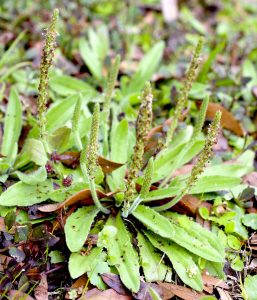
A native North American plantago, photo by Green Deane
There are Plantains that look like tough bananas and there are Plantains that are low and leafy plants. No relation. Just two different groups with the same common name. Plantains can be native or non-native. The one pictured right is native, the Dwarf Plantain. As a genus the plants are well-known. The leaves are edible raw when young. As they age they become more bitter and stringy. Cooking makes them palatable up to a point. Then they move into the astringent medical realm. They are used on bites, stings and to help puncture wounds heal. Seeds are edible once produced and are the source of the commercial dietary fiber psyllium. When finely ground the seeds are sold under the brand name Metamucil. There are numerous species of Plantagos (Plantains) with at least four common locally, P. virginiana, P. major, P. lanceolata and P. rugelii the latter which strongly resembles P. major. They are all used the same way. You can read about the Plantains here.
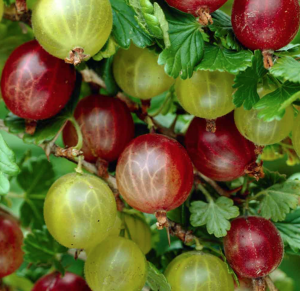
Gooseberries come in several colors.
You won’t find wild Gooseberries or currants anywhere near The South. They like cool, humid weather: Think New England, Nova Scotia, Newfoundland, New Brunswick and west of there (and also possibly the tops of the Appalachian Mountain Chain.) There were several “blights” in the last century. One took out the American Elm and another the great Chestnut. A third took its toll on Gooseberries. They did not get the disease themselves, the White Pine Blister, they were the intermediate host of the disease. As one might imagine a pine blister in the the Pine Tree State (Maine) was serious business thus Gooseberries and currants had to go. Legions of Boy Scouts and WPA workers destroyed it where they found it. But, I do remember seeing them in the wild. We often rode horseback over abandoned woods roads where there were also abandoned farm houses. There I saw Gooseberries and currants self-seeding. A ban on the plants was federally imposted in 1911 then shifted to the states in 1966. You can harvest Gooseberries now here and there at picking farms and no doubt there are some wild one still. You can read about Gooseberries here.

Green Deane Forum
Tired of Facebook and want to identify a plant? The Green Dean Forum is up and running again. Have you come to dislike Facebook, then join us on the forum. Perhaps you’re looking for a foraging reference? You might have a UFO, an Unidentified Flowering Object, you want identified. On the Green Deane Forum we — including Green Deane and others from around the world — chat about foraging all year. And it’s not just about warm-weather plants or just North American flora. Many nations share common weeds so there’s a lot to talk. There’s also more than weeds. The reference section has information for foraging around the world. There are also articles on food preservation, and forgotten skills from
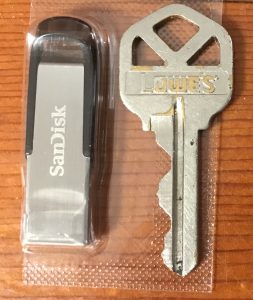
You get the USB, not the key.
172-video USB would be a good end of spring present and is now $99. My nine-DVD set of 135 videos has been phased out. The USB videos are the same videos I have on You Tube. Some people like to have their own copy. Most of the 172 USB videos have to be copied to your computer to play. If you want to order the USB go to the DVD/USB order button on the top right of this page. That will take you to an order form.
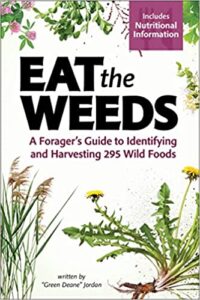
Now in second printing.
EAT THE WEEDS, the book, 274 plants, 367 pages, index, nutrition charts and color photos. It’s available in many locations including bookstores, Amazon. Most of the entries include a nutritional profile. It can also be ordered through AdventureKeen Publishing.
This is weekly newsletter #614. If you want to subscribe to this free newsletter you can find the sign-up form in the menu at the top of the page.
To donate to the Green Deane Newsletter click here.

